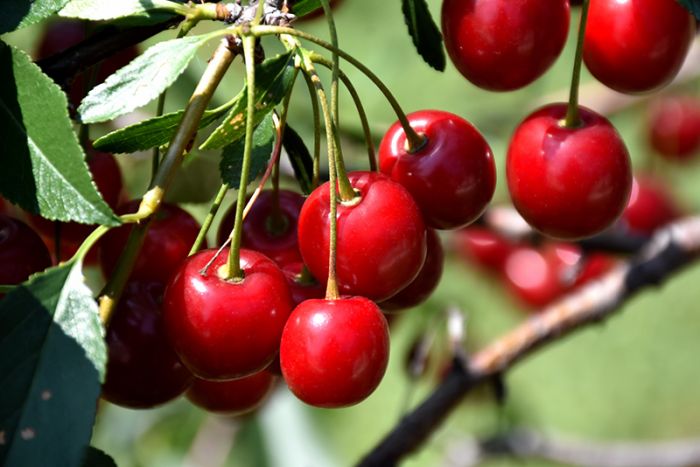What to Plant Near Black Walnut Trees
Black Walnut, Junglans nigra, and its close relative, the Butternut, Junglans cinerea, produce juglone which is toxic to many plants. Gertens Experts provide more information on what to plant and what not.


Out of stock
Coming soon, still growingDeep red fruits with red flesh and a sugar content halfway between sweet and pie cherries. Excellent for baking, preserves, or wine making.
At Minnesota's Destination Garden Center, we offer a diverse range of trees to suit any landscaping need. Whether you're looking for shade trees to cool your home or ornamental trees to add beauty and interest, you'll find the perfect tree at Gertens. Our knowledgeable staff can help you select the right tree for your space and provide tips for care and maintenance. Visit Gertens today and explore the unmatched variety of trees to enhance your outdoor environment!
Mesabi Cherry | Prunus 'Mesabi'
Height: 12 feet
Spread: 10 feet
Sunlight: full sun
Hardiness Zone: 4a
Other Names: Sour Cherry
Brand: Gertens
Description:
A compact fruit tree, the ideal size for backyard orchards; showy white flowers in spring followed by loads of bright red sour cherries in mid summer; needs full sun and well-drained soil, self-pollinating and hardy
Edible Qualities
Mesabi Cherry is a large shrub that is commonly grown for its edible qualities. It produces cherry red round fruit (technically 'drupes') with red flesh which are usually ready for picking in mid summer. Note that the fruits have hard inedible pits inside which must be removed before eating or processing. The fruits have a tart taste and a juicy texture.
The fruit are most often used in the following ways:
Features & Attributes
Mesabi Cherry is covered in stunning clusters of fragrant white flowers along the branches in mid spring before the leaves. It has dark green deciduous foliage. The pointy leaves turn an outstanding orange in the fall. The fruits are showy cherry red drupes carried in abundance in mid summer. The fruit can be messy if allowed to drop on the lawn or walkways, and may require occasional clean-up. The smooth dark red bark adds an interesting dimension to the landscape.
This is a multi-stemmed deciduous shrub with a distinctive and refined pyramidal form. Its average texture blends into the landscape, but can be balanced by one or two finer or coarser trees or shrubs for an effective composition. This plant will require occasional maintenance and upkeep, and is best pruned in late winter once the threat of extreme cold has passed. It is a good choice for attracting birds to your yard. It has no significant negative characteristics.
Aside from its primary use as an edible, Mesabi Cherry is sutiable for the following landscape applications;
Planting & Growing
Mesabi Cherry will grow to be about 12 feet tall at maturity, with a spread of 10 feet. It has a low canopy with a typical clearance of 2 feet from the ground, and is suitable for planting under power lines. It grows at a medium rate, and under ideal conditions can be expected to live for approximately 30 years. This is a self-pollinating variety, so it doesn't require a second plant nearby to set fruit.
This shrub is typically grown in a designated area of the yard because of its mature size and spread. It should only be grown in full sunlight. It does best in average to evenly moist conditions, but will not tolerate standing water. It is not particular as to soil type or pH. It is highly tolerant of urban pollution and will even thrive in inner city environments. This particular variety is an interspecific hybrid.
| Tree Type | Fruit |
|---|---|
| Sun Preference | Full-Sun |
| Mature Height (Range) | 10 - 15 feet |
| USDA Hardiness Zone | 4, 5, 6, 7, 8 |
| Common Family Name | Cherry |